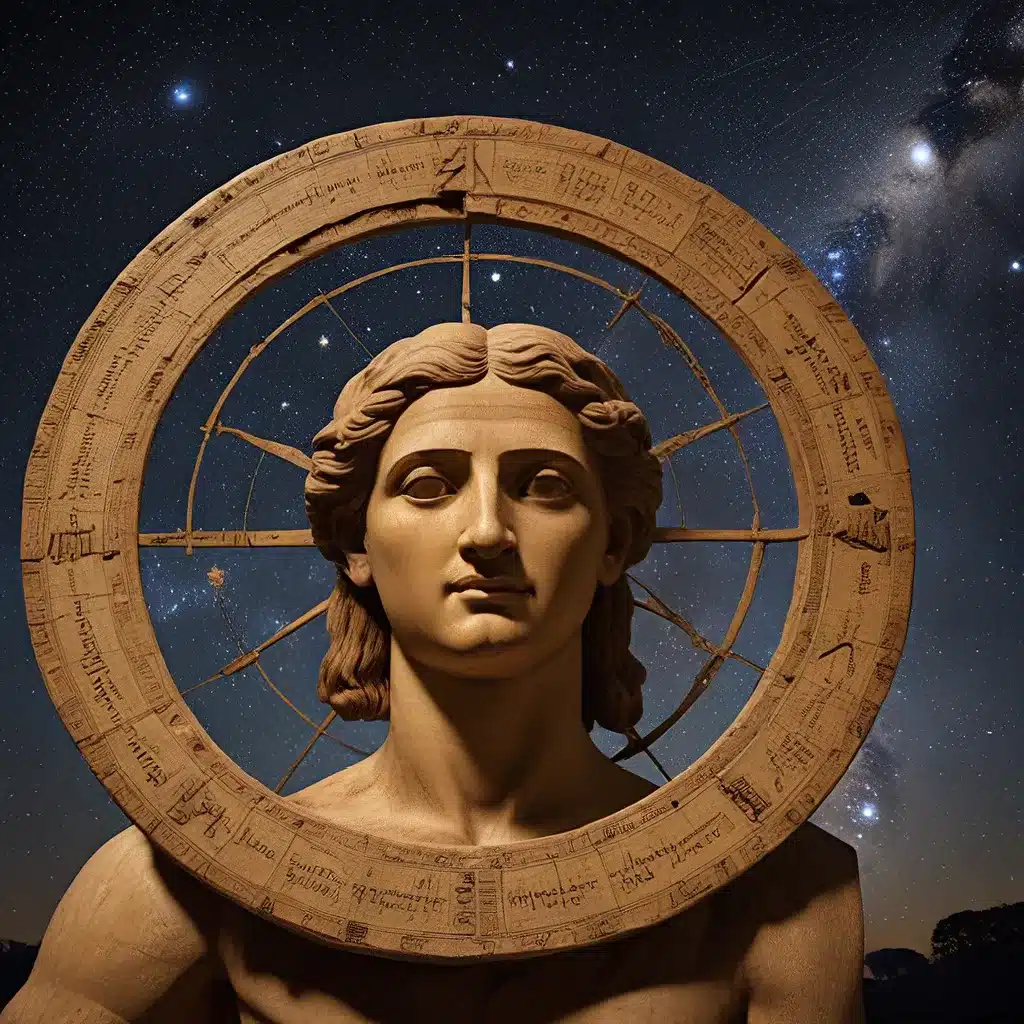
Celestial Geometry and the Art of Astronomical Observation
The study of celestial geometry, the geometric principles governing the movements of celestial bodies, and archeoastronomy, the examination of ancient structures aligned with astronomical events, offer a fascinating glimpse into the astronomical knowledge and cultural practices of bygone civilizations. These intersecting fields shed light on how our ancestors perceived, interpreted, and incorporated the rhythms of the cosmos into their daily lives.
Celestial geometry is the foundation upon which ancient astronomers built their understanding of the night sky. By studying the cyclic patterns of the sun, moon, and stars, these early scholars were able to develop calendars, predict seasonal changes, and even map the motions of the planets. The Greek word “planet” itself means “to wander,” reflecting the observed movement of these celestial bodies against the fixed backdrop of the stars.
The Moon, with its waxing and waning phases, its eclipses, and its influence on tides and agricultural cycles, was particularly significant in the worldviews of many ancient cultures. Likewise, the Sun’s annual journey through the ecliptic, the path it appears to take across the sky, was meticulously tracked and incorporated into the architectural and ritual practices of civilizations around the globe.
Archeoastronomy: Decoding Celestial Alignments in Ancient Structures
Archeoastronomy, the study of how ancient peoples understood and interacted with the celestial realm, offers a remarkable window into the past. By examining the alignment of ancient structures, such as pyramids, temples, and stone circles, with astronomical phenomena, researchers can unravel the profound significance these celestial connections held for our ancestors.
The iconic Stonehenge monument in England, for example, is renowned for its precise alignment with the solstices and equinoxes. The placement of the massive sarsen stones, known as the Heel Stone, is designed to capture the rising sun during the summer solstice, suggesting the site’s use as an astronomical observatory or for rituals related to the changing of the seasons.
Similarly, the Great Pyramids of Giza in Egypt exhibit a remarkable orientation aligned with the cardinal directions and the pole star, Alpha Draconis, as it would have appeared in 2600 BCE. This alignment likely held religious significance, connecting the pharaoh’s soul with the celestial realm, while also demonstrating the Egyptians’ advanced understanding of astronomy.
The Pyramid of El Castillo in Chichen Itza, Mexico, is another testament to the astronomical prowess of ancient civilizations. During the equinoxes, the shadow cast by the structure creates the illusion of a serpent slithering down the staircase, a phenomenon that was likely incorporated into Mayan religious and agricultural practices to mark the changing of the seasons.
Unlocking the Secrets of Ancient Calendars and Timekeeping
The study of celestial geometry and archeoastronomy has also shed light on the sophisticated calendars and timekeeping systems developed by ancient civilizations. Clay tablets from Mesopotamia, for instance, contain cuneiform inscriptions that record the movements of celestial bodies, including the planet Venus, and their use in predicting eclipses and other astronomical events.
The Mayan codices, intricate records of their astronomical knowledge, reveal the depth of their understanding of the cosmos. These ancient manuscripts detail the movements of planets, the cycles of the moon, and even the Venus cycle, demonstrating the Mayans’ remarkable ability to track and predict celestial phenomena.
Structures like the Intihuatana stone in Machu Picchu, Peru, which aligns with the sun during the solstices, and the precise orientation of the Pyramid of El Castillo, further illustrate the importance of celestial events in the calendrical systems of ancient cultures. These alignments not only marked the passage of time but also held profound religious and cultural significance.
Preserving the Legacy of Ancient Astronomical Knowledge
As we continue to explore the intersection of celestial geometry and archeoastronomy, we gain a deeper appreciation for the ingenuity and sophistication of our ancestors. These fields of study not only unveil the mysteries of the past but also highlight the universal human drive to understand and harness the power of the cosmos.
The preservation of ancient sites and artifacts bearing celestial alignments is crucial, as they represent a tangible link to the intellectual and cultural achievements of bygone civilizations. By safeguarding these remarkable structures and decoding their celestial connections, we ensure that the legacy of ancient astronomers endures, inspiring new generations to continue the quest for understanding the mysteries of the universe.
Conclusion: Unlocking the Freedom of Celestial Knowledge
The study of celestial geometry and archeoastronomy offers a profound understanding of the deep-rooted connection between humanity and the cosmos. From the Stonehenge monument’s precise alignment with the solstices to the Mayan codices’ detailed records of planetary movements, these fields of inquiry reveal the remarkable astronomical knowledge and cultural significance that our ancestors attributed to the celestial realm.
By unlocking the secrets of ancient astronomical practices, we not only expand our understanding of the past but also gain a renewed appreciation for the freedom and autonomy that such knowledge afforded to these bygone civilizations. As we continue to explore and preserve the vestiges of this celestial legacy, we honor the human spirit’s eternal drive to comprehend the wonders of the universe and our place within it.
The Lost Kingdoms is dedicated to uncovering the mysteries of the ancient world, combining cutting-edge archaeological research with a deep respect for the ingenuity and cultural achievements of our ancestors. Join us as we delve into the captivating realm of celestial geometry and archeoastronomy, unlocking the freedom of knowledge that comes from understanding our connection to the cosmos.


